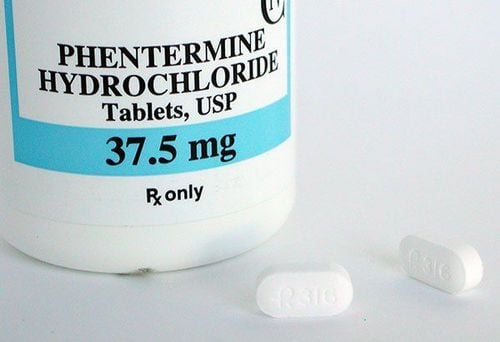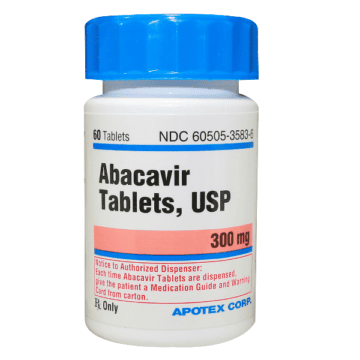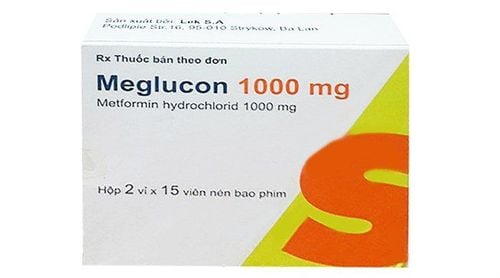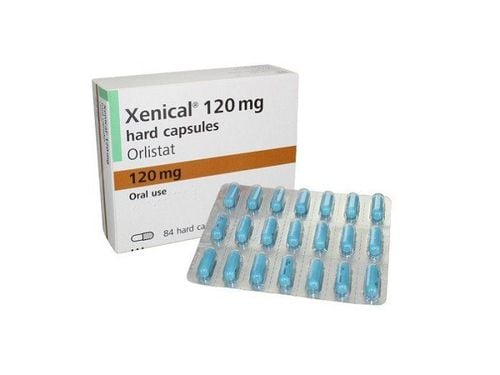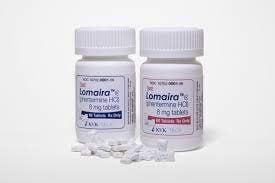This is an automatically translated article.
Article written by MSc, Doctor Nguyen Ngoc Bach, Department of General Internal Medicine - Vinmec Times City International Hospital
Obese hypoventilation syndrome (OHS; "Pickwickian syndrome") is defined as the presence of decreased alveolar flow while awake (arterial carbon dioxide pressure [PaCO2] > 45 mmHg) in an obese person (body mass index ≥30 kg/m2) found no other conditions associated with alveolar hypoventilation (eg, neuromuscular disease).
1. Epidemiology
Estimates of the prevalence of OHS vary considerably due to differences in race, population studied, and survey methods.
General population: estimates based on the prevalence of obesity and obstructive sleep apnea (OSA) in the community suggest that 0.15 to 0.3% of the US adult population is likely to have OHS . Obese people - The incidence of OHS increases as body mass index (BMI) increases. In several retrospective studies in patients with OSA, the prevalence of OHS in those with a BMI of 30 to 35 kg/m2 was 8 to 12%, which was higher in those with a BMI of 40 kg/m2 (18 to 31%) and those with a BMI ≥50 kg/m2 (50 percent). Patients with Sleep Apnea (OSA) - Retrospective studies report a 16% incidence of symptomatic sleep center referrals to OSA, higher (22%) if the patient is obese or with severe OSA (eg, sleep apnea index >60 events per hour; 30 percent). Survey in Bariatric Surgery Subjects - Prevalence varies from 8 to 65 percent in bariatric surgery patients. Hospitalized Patients - In a study of hospitalized patients with BMI >35 kg/m2, the incidence of OHS was 31%. In a single unit study, 8% of patients admitted to the ICU met OHS criteria. Chronic Hypoxia - In another study of obese patients with chronic hypoxia, 51% were found to have OHS. Racial factors also affect prevalence. In Japanese patients present for OSA investigation, 2.3% were found to have OHS compared with 20% of predominantly African-American patients evaluated at a US sleep center.

2. Physiology
Obesity (body mass index [BMI] > 30 kg/m2), in particular, severe obesity (BMI > 50 kg/m2), is a major risk factor for OHS. Obesity causes an increased need on the respiratory system for compensatory mechanisms to maintain ventilation (PaCO2 <45 mmHg). OHS develops due to the failure of such compensatory mechanisms leading to hypoventilation and hypercapnia (PaCO2 45 mmHg). Detecting the early disease state of the obese hypoventilation syndrome: daytime PaCO2 tests are normal but baseline alkalinity elevations higher than 2 mmol/L should be monitored as a pre-disordered state may be reduced. Ventilation (Pre-OHS) Respiratory societies have established diagnostic criteria for obesity-related hypoventilation: Stages I and II obesity-related hypoventilation combine people with obese with hypercapnia during sleep but normal awake PaCO. Serum Bicarbonate levels in these stages are <27 mmol/L (stage I), >27 mmol/L (stage II), respectively. Stages III and IV describe OHS individuals, where Stage IV represents OHS individuals with comorbid cardiometabolic diseases while Stage III OHS does not. The following factors are likely to be involved in the pathogenesis of OHS:
Sleep-breathing disorders (SDB) Altered compensatory mechanisms of the lungs Ventilation control Increased production of carbon dioxide 2.1 Disturbance of breathing during The role of SDB in the pathogenesis of OHS is as follows:
The majority of patients with OHS have obstructive sleep apnea (OSA) with concomitant hypoventilation during sleep alone (events that do not cause sleep apnea) obstruction) is present in about 10 percent of individuals. 90% of patients with OHS have at least mild OSA (apnea-hypopnea index [AHI] > 5 events per hour), with severe disease (AHI > 30 events per hour) seen in 70%. Most studies have examined the mechanisms that play a role in patients with OHS and OSA, and it is thought that similar mechanisms are likely to contribute in those with OHS and sleep hypoventilation.
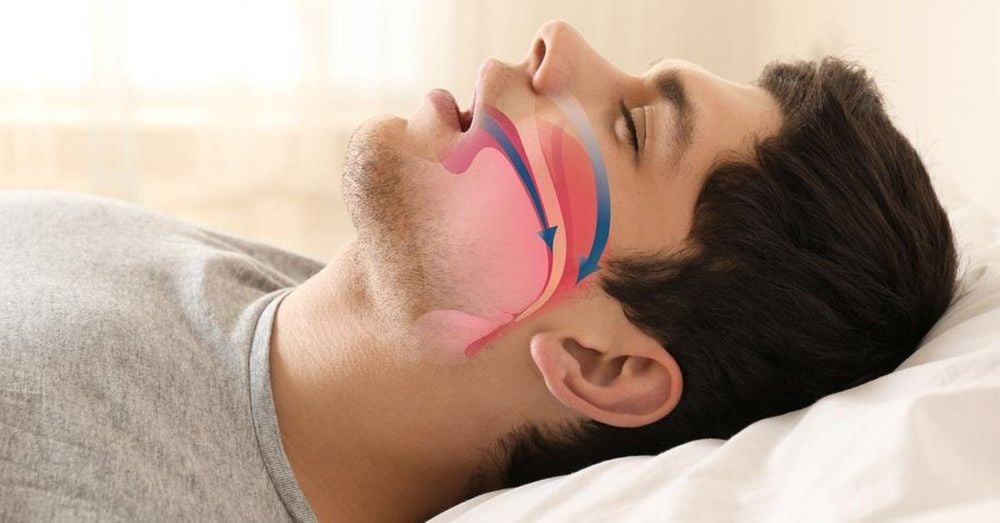
Treatment of nocturnal SDB is usually with positive airway pressure or tracheostomy (rare), which also plays a role in the treatment of OHS. In addition, although other obesity-related mechanisms (eg, effects of gravity on respiratory muscles and decreased control of ventilation) play a role in promoting sleep hypoventilation, the effects in gas exchange is most pronounced during sleep, further emphasizing the contribution of SDB to the pathogenesis of OHS. On the basis of breathing disturbances, the respiratory physiological phenomena occurring in subjects with OHS are: Reduced nocturnal carbon dioxide excretion - The mechanism of nocturnal carbon dioxide (CO2) clearance was studied. in patients with OSA. During hypoventilation and obstructive apnea events, the arterial pressure of carbon dioxide (PaCO2) increases. Patients with OSA without OHS can normalize PaCO2 between respiratory events. In contrast, OHS patients with OSA were hypoventilated for longer periods between events, so CO2 was not completely eliminated (respiratory acidosis. The renal system responds by withholding bicarbonate to compensate. If the renal system is unable to adequately excrete the retained bicarbonate before the next bedtime, a gradual accumulation of serum bicarbonate occurs.Increased serum bicarbonate levels will decrease the ventilation response with an increase in serum bicarbonate. add CO2, and eventually lead to the development of chronic decreased alveolar flow as evidenced by compensated respiratory acidosis Nocturnal hypoxia - In addition to hypercapnia during wake and sleep, individuals People with OHS exhibit more severe nocturnal hypoxia than those with OSA or obesity alone.The ratio of peripheral oxygen saturation levels <90% of total sleep time is strongly associated with development. of hypercapnia 2.2 Respiratory factor disturbances Ventilation effects: In obesity, fat accumulation around abdomen and chest wall contribute to ventilation limitation. The mass and inertia of adipose tissue and the influence of gravity may contribute to impaired alveolar ventilation, especially during sleep. Ventilation/perfusion disorders: leading to consequences that contribute to CO accumulation and hypoxemia in patients with OHS. Individuals with OHS adopt a breathing pattern characterized by low tidal volume and increased respiratory rate, which increases anatomical dead space leading to CO2 accumulation.
+ Obese individuals have hypoventilation (V) of the lower lobes of the lungs, possibly due to reduced lung function, difficulty in dilating the thorax and diaphragm, and closure of some of the alveoli at the end of expiration. Obese subjects also have increased lower lobe (Q) perfusion due to increased pulmonary blood volume. V/Q disproportion (that is, perfusion-related unprotected areas), leads to hypoxia in OHS.

Decreased respiratory muscle strength: Obesity is associated with increased respiration due to increased volume, especially in the supine position during sleep. Therefore, the respiratory muscles (eg, diaphragm and intercostal muscles) need to work harder to maintain ventilation function. Reduced respiratory muscle strength may contribute to the pathogenesis of OHS by contributing to hypoventilation. Patients with OHS often have reduced respiratory muscle strength and endurance, which is impaired in the supine position. Although severe respiratory muscle weakness is the only cause of clinical hypoventilation, partial impairment may also be sufficient when other contributing factors such as excessive abdominal obesity, severe upper airway obstruction, or shows decreased insulin-like growth factor 1. Maximum voluntary ventilation (MVV), a marker of respiratory muscle strength, has been shown to be lower in patients with OHS than in obese patients without OHS and negatively correlated with CO2 concentration. 2.3 Disorders of respiratory regulatory factors Decreased ventilation response - Hypoxic and hypercapnic ventilation response (receptacle that stimulates ventilation due to hypoxia and hypercapnia) is often decreased during sleep and is aggravated in patients with OHS, especially when the patient is supine. Studies have shown improved ventilation response after effective treatment of sleep apnea. Leptin resistance - Leptin is an adipokine produced in adipose tissue that stimulates ventilation. Leptin resistance has been suggested as a contributing mechanism for OHS. Elevated serum leptin concentrations have been reported in obese patients, particularly those with OHS. In one study, hypercapnic obese patients had higher serum leptin levels compared with other patients (39 vs 21 ng/ml) and serum leptin predicted the presence of high blood CO. It is hypothesized that the increased leptin level may be a compensatory response to leptin resistance and/or the attempt to maintain alveolar ventilation under conditions of obesity-induced increased respiratory work and increased upper airway resistance. A study of patients with similar OSA levels reported higher leptin levels in patients with OHS.
+ Studies examining the impact of noninvasive positive airway pressure therapy on leptin levels are heterogeneous. One study of OHS patients reported that compared with non-adherence to noninvasive ventilation (NIV), those who adhered to treatment had reduced leptin levels. In contrast, a trial of 35 patients with OHS reported that compared with lifestyle adjustments, NIV did not reduce leptin levels, despite improving sleep and daytime gas exchange. Finally, in a study of six patients with OHS (hyperventilation during sleep but without OSA) leptin levels increased after NIV treatment.

Obesity-associated hypoventilation syndrome is a disease of varying prevalence across populations. Increased awareness of the condition means more cases are being diagnosed in adults. The disease has many consequences such as chronic hypoventilation that can be associated with congestive heart failure, arrhythmias, and angina. Conditions associated with obesity may include arterial hypertension, diabetes mellitus, hypothyroidism, osteoarthritis, liver dysfunction, hyperlipidemia, asthma, and pulmonary hypertension. Quality of life and complication rates improve with early recognition, weight loss, and CPAP.
Periodic health check-ups help to detect diseases early, especially those who are obese, so that they can have a treatment plan for optimal results. Currently, Vinmec International General Hospital has general health checkup packages suitable for each age, gender and individual needs of customers with a reasonable price policy, including:
Health checkup package general Vip Standard general health checkup package Patient's examination results will be returned to your home. After receiving the results of the general health examination, if you detect diseases that require intensive examination and treatment, you can use services from other specialties at the Hospital with quality treatment and services. outstanding customer service.
Please dial HOTLINE for more information or register for an appointment HERE. Download MyVinmec app to make appointments faster and to manage your bookings easily.





